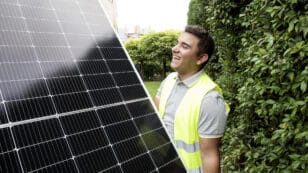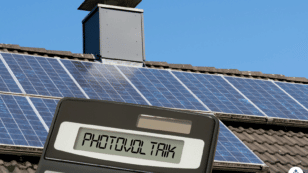
Is Solar Worth It in North Dakota? (2024 Homeowner's Guide)
Here’s a quick overview of solar viability in North Dakota:
- North Dakota ranks 51st in the country for solar installations*
- The average electricity rate is 12.57 cents per kilowatt-hour (kWh)**
- The average solar payback period is 13 years***
- Homeowners are eligible for a decent net metering policy and the federal solar investment tax credit (ITC)
- The average homeowner saves $25,758 over the lifetime of their solar system***
*According to the Solar Energy Industries Association.1
**Data from the Energy Information Administration.2
***Calculated assuming the system is purchased in cash.
Each product and or company featured here has been independently selected by the writer. You can learn more about our review methodology here. If you make a purchase using the links included, we may earn commission.
North Dakota ranks dead last in the country in terms of solar adoption, so many homeowners assume that solar panels aren’t a good investment in the area. In reality, solar is a better option for many North Dakotans than residents of many other states, although it’s true that solar panels won’t benefit everyone. Below, we’ll be discussing the different metrics you can use to figure out if solar is a good option for your home. We’ll also get into the benefits of converting to solar and some crucial things you need to keep in mind throughout the process.
To speak with an EcoWatch-vetted professional who can help you determine whether solar is worth it for your North Dakota home, follow the links below.

Lightspring Solar

Regional Service
Average cost
Pros
- Locally owned and operated
- Offers products from leading manufacturers
- Custom system designs
- Representatives are experts on local policies
Cons
- Relatively young company
- Limited warranty coverage
- No leases or PPAs

GenPro Energy Solutions

Regional Service
Average cost
Pros
- NABCEP-certified technicians
- Competitive pricing
- Multitude of products and services
Cons
- No leases or PPAs
- Limited warranty coverage

REAL Solar
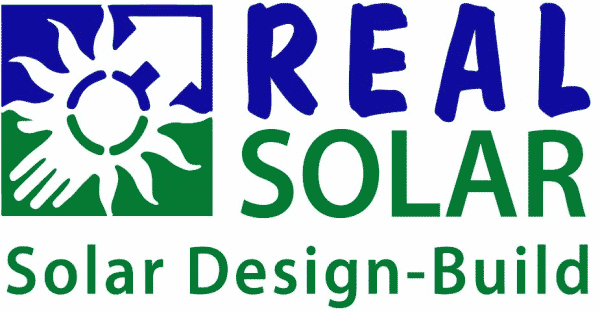
Regional Service
Average cost
Pros
- Outstanding customer service
- Offers products from leading manufacturers
- NABCEP-certified technicians
- Representatives are experts on local policies
Cons
- Limited service area
- No leases or PPAs
- Slightly limited service offerings
- Limited warranty coverage
Watch Below: Learn How You Can Profit Off Of the Extra Energy Your Solar Panels Produce
How to Figure Out if Solar Panels are Worth It in North Dakota
Installing solar panels saves most homeowners in North Dakota a significant amount of money, but this is only true if your home is a good candidate for solar conversion. Below are the factors to keep in mind that will help you assess your home’s solar viability.
What’s Your Home Electricity Consumption?
First, you’ll want to look at how much electricity your home uses on a monthly basis. Solar panels save you money because they offset your electricity bills, which means you stand to save more if you have high energy needs. A common benchmark for solar viability is a minimum of 500 kWh consumed every month. If you use less than this, solar might not be a good fit for you. You can check your past electric bills for your average monthly consumption. The average home in North Dakota uses around 1,085 kWh per month, putting the state above average in energy usage and also putting most residents well above the 500-kWh benchmark. As such, most North Dakotans use plenty of energy to make solar a worthwhile investment.
How Much Is It To Go Solar in North Dakota?
The price of solar panels in North Dakota averages around $3.14 per watt. This is well below the national average of $3.33 per watt and makes ND the fourth most affordable state for solar equipment. Most homes in the Peace Garden State need around an 11-kW system, putting the average total price to go solar around $24,178 after the federal tax credit is taken into consideration. Solar panels provide the most savings and the most value in states where power bills are high, which could be attributed to elevated electricity rates or above-average energy consumption. North Dakotans pay below average for electricity but use more than most US residents. As such, solar power in North Dakota is a bit more valuable than in many other states.
What’s the Payback Period for Solar in North Dakota?
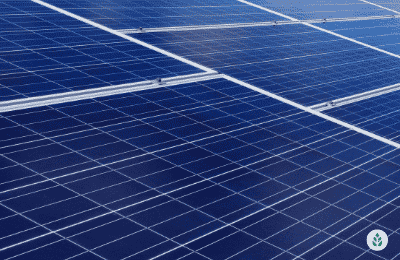
What Are Average Buy-Back Rates in North Dakota?
Most states now mandate net metering programs, which are electricity buy-back programs that let you offset your electric bills with excess generation from your photovoltaic (PV) panels. Net metering is one of the largest benefits of going solar, as it reduces your panel payback period, bumps up your ROI and makes your panels more valuable overall. Net metering is mandated for all investor-owned utility companies in North Dakota, but the Public Utility Commission doesn’t require that electricity providers buy back the energy at a specific rate. It also doesn’t mandate net metering for electric cooperatives or other electric companies. Many companies, therefore, offer an avoided-cost rate, which is below the retail rate that you pay for incoming kilowatt-hours. This is less beneficial than having the retail rate available, so many solar customers opt to add a solar battery to their system to eliminate their electric bills and maximize their ROI.
How Much Sun Does Your Roof Receive?
Solar panels convert sunlight to electricity, so the more available sun is on your property, the more energy your system will produce and the more you’ll save on your electric bills. North Dakota receives around 201 sunny days per year, on average. This is just below the national average of 205, which makes North Dakota about average for solar conversion in terms of sunlight availability. It’s not enough to rely on the average number of sunny days, though, as not every home receives the same sunlight. The direction of your roof, for example, affects available sunlight. In the US, south-facing roofs are the best for solar panels, while west-facing roofs can also work in many cases. You should also check your roof for shading during the peak production hours. Shade from trees or buildings will naturally reduce your solar electricity production and, therefore, your solar viability.
What’s the Outlook on Solar in North Dakota?
As the state with the slowest overall adoption of solar energy, there is nothing for the solar market in North Dakota to do but improve! Currently, the majority of North Dakota’s energy comes from oil and gas, and there are more tax incentives for fossil fuel companies than there are for residential solar customers.3 Despite having a Renewable Portfolio Standard (RPS) goal for clean energy production, North Dakota also ranks as one of the least environmentally-friendly states, which is another reason why solar is taking so long to catch on.4 With that being said, solar conversions were significantly more prevalent in North Dakota last year than they have ever been before. The likelihood is that, as the country as a whole becomes more eco-friendly and the solar industry continues to expand and improve, solar adoption will pick up in North Dakota.
Benefits of Solar Energy in North Dakota
Despite the slow adoption of solar energy in the Peace Garden State, there are quite a few benefits that solar customers in North Dakota enjoy. We’ll discuss the most appealing upsides of solar conversion below.
Electricity Bill Savings
The most substantial financial benefit of going solar is the savings your panels will provide you on your electric bills. Your panels will produce energy that will offset your electricity expenses, which total around $136.38 in ND, on average. If you are able to eliminate your energy bills — which usually requires a solar battery in North Dakota, given the suboptimal net metering policy — you could save around $1,636 every year on power. These savings usually accumulate over time to offset the entire system expense, which means you’ll effectively pay nothing for your solar panels. Even after the system is paid off, you’ll see continuous savings and a locked-in electricity rate for the remaining lifespan of the system. The average North Dakota solar customer saves around $25,758 after the system pays for itself.
Lower Taxes & Access to Other Incentives
North Dakota is far from the most solar-friendly state, but there are still solar incentives offered in the area by the state and federal governments. One of the most significant incentives is the federal solar tax credit (ITC). This is a credit to your federal tax liability for 30% of your entire renewable energy system expense. In North Dakota, the typical ITC amount is $10,362. Although fewer in number than most other states, below are some additional North Dakota solar incentives you can take advantage of:
- Net Metering: As mentioned above, net metering is an excellent solar incentive that increases your return on investment, further reduces your energy bills and makes solar more valuable. North Dakota mandates net metering for all investor-owned utilities (IOUs). Most companies buy back energy at the avoided-cost rate.
- North Dakota Solar/Wind Easements and Laws: North Dakota guarantees that all taxpayers have access to solar panels and sunlight. No HOA or municipality can prevent you from installing solar, and the laws help ensure that no neighbors or nearby buildings obstruct your sunlight during peak hours.
- Renewable Energy Property Tax Exemption: Normally, a home improvement that increases your home value will also increase your property taxes. Although solar panels do boost home value, this tax exemption prevents your property taxes from going up as a result.
Home Resale Value Increase
One massive benefit of going solar that many solar customers forget to consider is the bump in home value solar panels provide. Research from Zillow suggests that the average home will become about 4.1% more valuable from the addition of a solar panel system.5 With an average property value of $250,248, most North Dakotans will enjoy a bump in value of around $10,260.6 This benefit is one that will only be applicable to solar customers who use solar financing or a cash purchase to acquire their panels. Solar leases and power purchase agreements (PPAs) not only won’t increase your home value, but they can actually make your property less appealing to buyers who might have to assume the lease after closing.
Clean, Renewable Energy
There are some environmental benefits to installing solar panels and converting to clean energy as well. Most importantly, solar panels help you reduce your dependence on fossil fuels, which also means you’ll contribute less pollution to the environment and reduce your carbon footprint. You will become more energy independent, which means you won’t always have to rely on your electric utility company, and you won’t be subject to electricity rate spikes that are expected in the future.
What to Look Out For When Considering Solar in North Dakota
Even if you confirm that your home is a good candidate for solar panels, you’ll still have quite a few things to decide and think about before you commission your system. We’ll include some additional considerations you’ll want to make below.
Upfront Fees
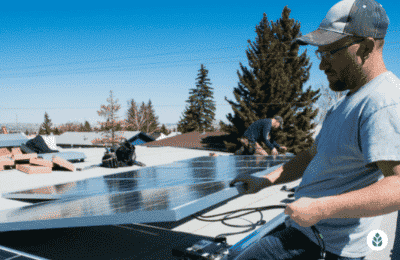
Payback Period
As mentioned above, the solar panel payback period is a crucial factor to consider, and you can use it to estimate your return on investment to see if solar is worth it for you. The average payback period in North Dakota is around 13 years, with a typical range of 10 to 16 years. If you have a 13-year payback period, your system is expected to deliver around $25,758 in lifetime energy savings. If your payback period is longer, your ROI will be less in the long run.
Net Metering Policies in North Dakota
Net metering is mandated in North Dakota for investor-owned utilities, but the state doesn’t set a minimum buy-back rate. As such, most electric companies use an avoided-cost rate, which is helpful but less than ideal. Net metering usually isn’t a make-or-break factor when it comes to going solar. Additionally, many North Dakotans choose to pay more for a solar battery, which helps eliminate electric bills to maximize savings.
Pending Policies & Changes to Incentives
The solar industry is always expanding and changing, so you should be aware that the policies and incentives mentioned above are subject to change. New solar rebate programs could pop up as the market for solar improves in North Dakota, and existing policies could change or disappear. It’s not advisable to wait around for better incentives, but you should check for updates to policies before you sign any solar contracts.
Weather & Climate in North Dakota
The weather in North Dakota is generally conducive to solar conversion. There is little risk of extreme weather, and although the state has slightly more cloudy days — which can significantly reduce your panels’ production — than the rest of the country, there is generally plenty of sun to make solar a good investment. Some homeowners in the area worry about the northern location of North Dakota and the long winters. Solar panels are more efficient near the equator, but most homeowners will still find that there is plenty of sunlight to produce sufficient power. The winters will bring a lower sun intensity, but electricity travels more quickly in the cold, so efficiency will still be decent in the winter in North Dakota. Still, it’s often worth finding an installer that will provide efficiency warranties to help ensure that your panels produce sufficient electricity, even in the winter.
Companies Pushing Solar Leases or PPAs
Finally, you need to be careful when deciding on the solar panel company you hire to tackle your installation. Not all companies are the same, and some are merely out for profit rather than promoting solar or appealing to your best interests. Some companies advertise “free panels,” which in reality is just a marketing tactic to get you to sign a solar lease. Solar leases are less beneficial for you as the customer, as they don’t improve your property value, they don’t let you take advantage of the ITC and they take far longer to pay off, leading to a lower ROI overall. Unfortunately, there have been some reports of solar scams throughout North Dakota, including “investment opportunities” for solar timeshares that ultimately end up causing homeowners to lose more money than they save.7 You should also be on the lookout for companies more overtly pushing solar leases or power purchase agreements (PPAs). Ultimately, choosing a vetted and reputable solar panel installation company to handle your home solar project is the best way to avoid scams and get the best experience possible.
Wrap Up: Is Solar Worth it in North Dakota?
For most North Dakota homeowners, installing solar panels is an outstanding investment that often ends up saving thousands of dollars. However, solar panels aren’t ideal for every home, so determining if your home, in particular, will benefit from solar is a crucial first step. Some things to consider when determining your home’s solar viability include your monthly electric bills, the price of your system, shading on your roof, your home’s orientation and more. We recommend getting in contact with a vetted solar installer to help you decide if solar panels are right for your home before converting.
See also: Find out how much solar power your roof can produce with our solar calculator
Read More About Going Solar
- What Are the Most Reliable Solar Companies in North Dakota?
- What North Dakota Solar Incentives Are Available?
- Find Cost Savings on Solar in North Dakota
The cost information presented in this article is derived from a comprehensive analysis, incorporating data from multiple industry sources. The average cost per watt per state was calculated based on figures from Consumer Affairs, Energy Sage, and Berkeley Lab’s Electricity Markets & Policy Department. Additionally, monthly energy consumption and the average monthly cost of electricity were sourced from the U.S. Energy Information Administration, ensuring a well-rounded and accurate representation of the information presented.
Frequently Asked Questions
The EcoWatch team gets lots of questions on a daily basis from homeowners in North Dakota who are thinking of going solar. Below are some of the things we get asked most often, along with our responses. If you have specific questions that aren’t answered here, reach out to our team of solar experts at solar@ecowatch.com.
Your estimated solar panel payback period depends on quite a few factors, including your average monthly energy expenditure, your home’s energy efficiency, the solar PV system size, and more. The best ways to calculate your payback period are to use a solar calculator or, for a more accurate estimate, have a solar installer calculate it for you. The average payback period in North Dakota is around 13 years, with most homes falling somewhere between 10 and 16 years for a full payback.
In most cases, yes! Solar panels provide you with savings on your electric bills. With the average North Dakotan spending around $136.38 per month on electricity, that’s a potential annual saving of $1,636. Your solar panels are expected to pay for themselves within about 13 years in ND, after which your total estimated savings will reach $25,758, on average.
Yes! As long as you buy or finance your solar panels, your solar power system will bump up your home value quite significantly. Estimates from Zillow state that the average home value increase from solar is around 4.1%, which means North Dakotans, whose home values average about $250,248, will enjoy a property value increase of approximately $10,260.
Yes, building permits are required for solar panel installation in North Dakota. Your solar installer will usually pull the permits and close them out as a part of the installation process, and they will typically include the permit expenses in your estimated solar energy system total.
You can do DIY solar panel installation in North Dakota, but it’s usually not the best idea. While the DIY installation will save you some money on the installation fees, you’ll be putting your home at risk of roof leaks and other damages by taking on the work yourself. It’s much safer and usually more profitable to have a trusted installer complete the process for you.
Top Solar Installers in North Dakota Cities
Comparing authorized solar partners
-
- Locally owned and operated
- Offers products from leading manufacturers
- Custom system designs
- Representatives are experts on local policies
- Relatively young company
- Limited warranty coverage
- No leases or PPAs
Not RatedOutstanding Regional Installer
Having trouble deciding? Click below and use our process to receive multiple quotes instead:

 233k
233k  41k
41k  Subscribe
Subscribe 


